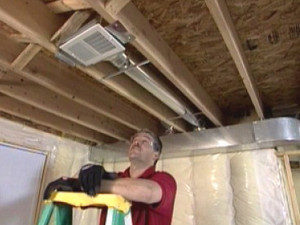 Regular house maintenance is something that all of us need to pay attention to if we want to protect our investment and make sure that our home goes up in value over the years along with our neighbor’s houses. One of our neighbors thinks that his house is worth $600,000 because he has a large home. He has a large lot which is on the surface very attractive. In fact, there are homes in our neighborhood that are worth amounts in that range.
Regular house maintenance is something that all of us need to pay attention to if we want to protect our investment and make sure that our home goes up in value over the years along with our neighbor’s houses. One of our neighbors thinks that his house is worth $600,000 because he has a large home. He has a large lot which is on the surface very attractive. In fact, there are homes in our neighborhood that are worth amounts in that range.
He has not maintained his house that well. So it needs a lot of work. Someone who would like to buy his home would look at it and then look at all of the money he would have to spend. For example, it is a 2500 square foot home. All of the carpets and the linoleum ( who has linoleum in their kitchens now) would have to be replaced. Most people would put in hardwood and tile. The cost can vary a great deal. But let’s assume the cost would be $20,000. The entire home would also have to be painted which would cost another $10,000 approximately. He has a three-car wide, 2 car deep driveway that would need to be repaved, which could cost another $8000.
Regular House Maintenance
The windows should also be replaced and there are a lot of windows and these could cost up to $30,000. While they are at it they would probably want to update the bathrooms. Also, update the kitchen which can cost anywhere from $40,000 to as much as $70,000. The sky is the limit of course and it could be done on the cheap or nothing at all could be done. Excluding the cost of the kitchen and the bathrooms, the total comes to $70,000. Most people would want to do something to the kitchen and bathrooms. So let’s allow a total of $30,000 for that which takes it to $100,000 in maintenance expenses.
We have not even touched the outside in terms of things such as landscaping etc that need to be done. The point is what should be a $600,000 home might only be worth $500,000 or less. It depends on what the comparables are and how much competition there is from other homes on the market.
The point we wanted to make with all of this is that consumers need to complete regular house maintenance to maintain the value of their homes. This man has lived in his home for over 25 years. He could have completed some of this maintenance over time without it all adding up in the manner that it has.
Maintenance Activities
Here is a brief list of maintenance activities that will help to maintain the value of your home provided that repairs are completed when identified.
- Check your eaves trough and make sure it’s clear of leaves during the spring and again in the fall
- Check all of your windowsills to make sure they are not rotting and are well sealed, paint them every year or two
- Repaint your window frames if necessary, especially if the paint is flaking off
- Replace your air filter on your furnace at least once every 3 months and more often if your home is dusty
- Make sure there is no debris around your air-conditioner, otherwise, it will overwork and burn out
- Trim all of your trees and shrubs, to keep them looking great and also not block windows
- Add fertilizer spring summer and fall to your lawn
- Remove all leaves and debris from the lawn and gardens in late fall and early spring to protect your lawn
- Check all exterior walls and the roof for any damage from the wind, rain or snow



 door consists of several major parts. There are the panels which everyone sees, there are the rollers that slide inside the steel tracks and there are the steel springs which acts as counterweights and make it easy for you to lift the door to open it. These same weights will also stop the door from closing too quickly from it’s own weight. Many people will also have a garage door opener as well which opens or closes the door at the press of a button.
door consists of several major parts. There are the panels which everyone sees, there are the rollers that slide inside the steel tracks and there are the steel springs which acts as counterweights and make it easy for you to lift the door to open it. These same weights will also stop the door from closing too quickly from it’s own weight. Many people will also have a garage door opener as well which opens or closes the door at the press of a button. wooden framed windows. Unless you paint your windows and give them the proper care, they will succumb to dry rot or wet rot from the elements. If you have ever had to replace windows, then you will know just how expensive they can be to replace. Depending on the size of the window, they can cost from as low as $200 to $1000 for larger windows. Complex windows can cost even more. Doing an entire home can literally cost thousands of dollars which most of us cannot afford. The alternative of paint your windows is far cheaper. Paint Your Windows is definitely the way to go.
wooden framed windows. Unless you paint your windows and give them the proper care, they will succumb to dry rot or wet rot from the elements. If you have ever had to replace windows, then you will know just how expensive they can be to replace. Depending on the size of the window, they can cost from as low as $200 to $1000 for larger windows. Complex windows can cost even more. Doing an entire home can literally cost thousands of dollars which most of us cannot afford. The alternative of paint your windows is far cheaper. Paint Your Windows is definitely the way to go. lawns and consumers may use riding lawn mowers instead. Regardless of how often you cut your lawn and how big your lawn is, the engines and the cutting surfaces should be maintained on a regular basis. Failure to look after these machines usually ends up with repair costs and / or needing to purchase a new lawn mower. Poor lawn maintenance, especially a dull lawn mower blade can cause your lawn to have a clipped torn look to it. The situation also creates opportunities for mold and other diseases to enter your lawn.
lawns and consumers may use riding lawn mowers instead. Regardless of how often you cut your lawn and how big your lawn is, the engines and the cutting surfaces should be maintained on a regular basis. Failure to look after these machines usually ends up with repair costs and / or needing to purchase a new lawn mower. Poor lawn maintenance, especially a dull lawn mower blade can cause your lawn to have a clipped torn look to it. The situation also creates opportunities for mold and other diseases to enter your lawn.